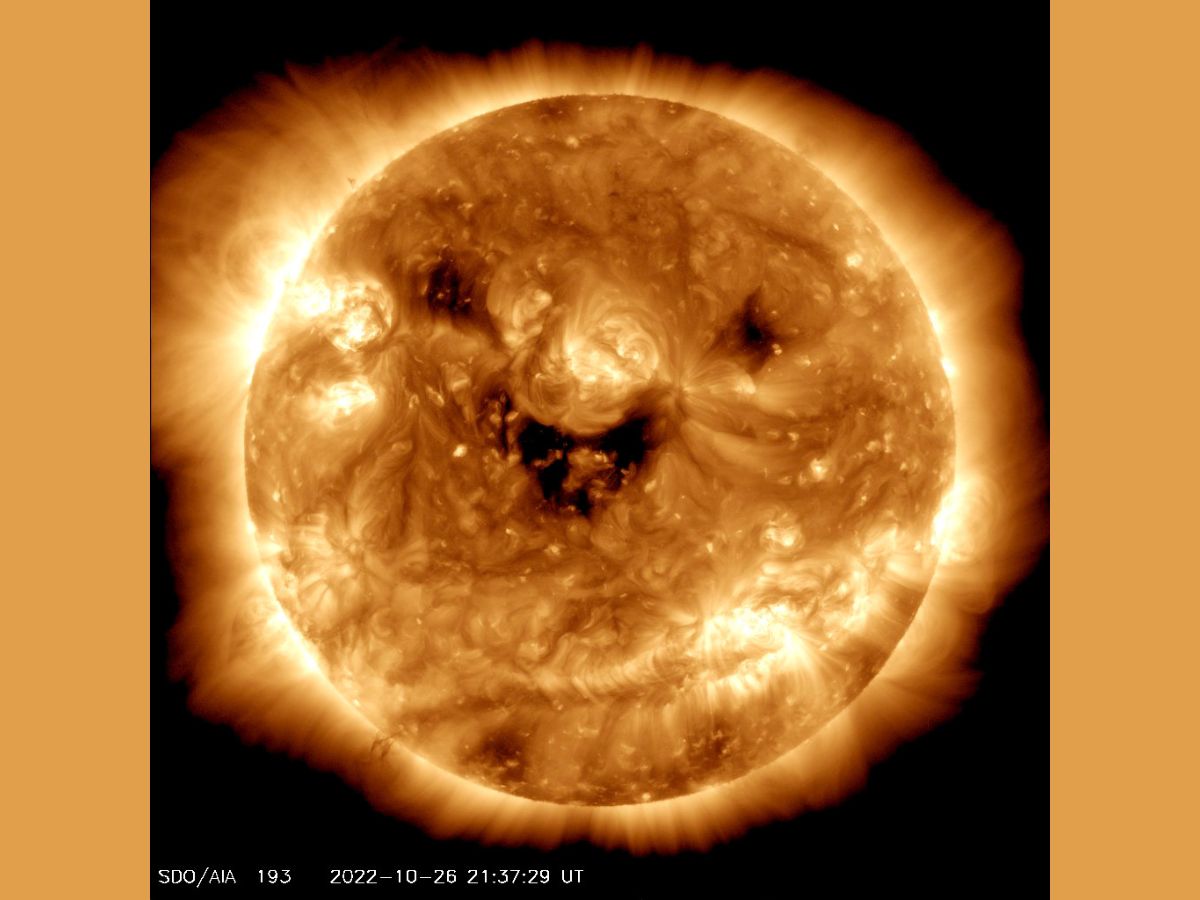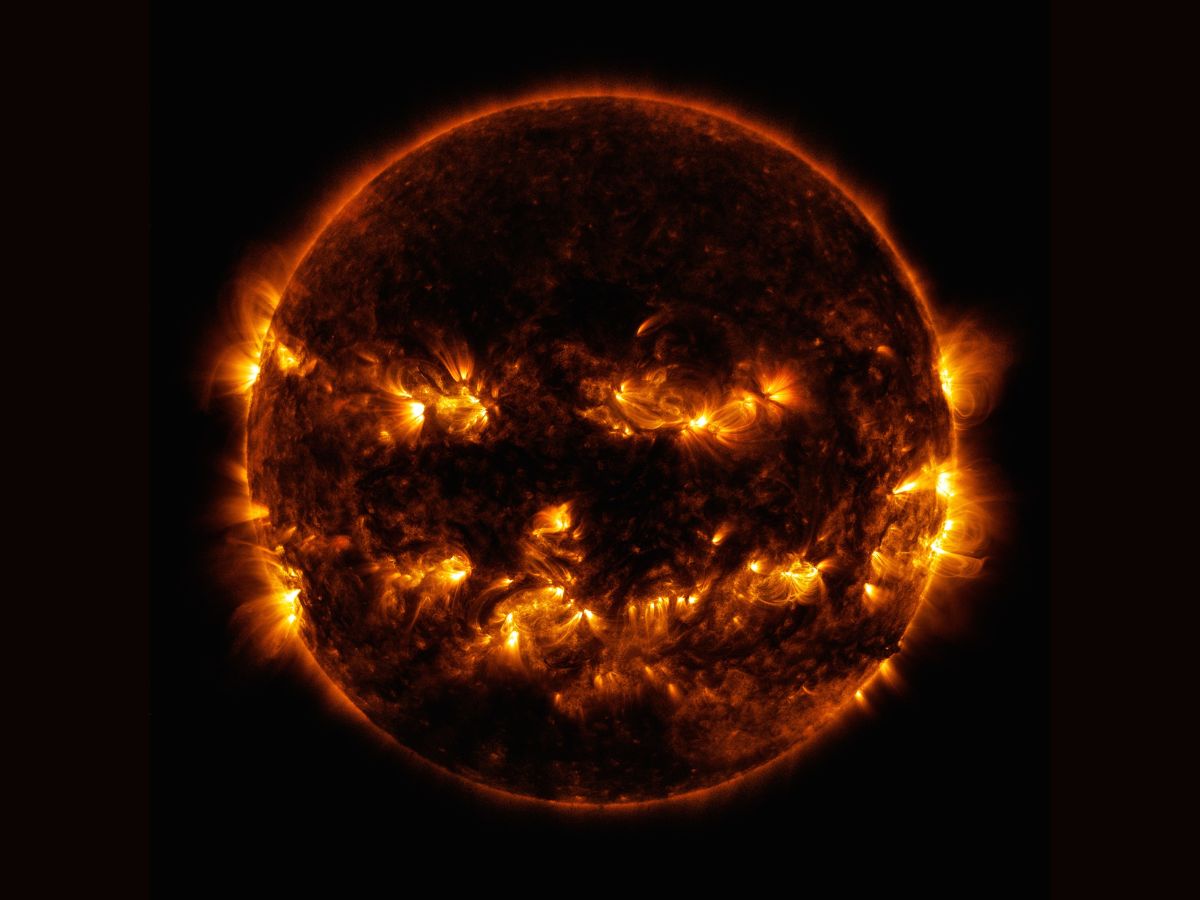NASA's Solar Observatory Captures The Sun 'Smiling' Back At Earth. See PIC
NASA's Solar Dynamics observatory observed the Sun in ultraviolet light, and captured dark patches on it. These patches create an appearance of the Sun smiling back at Earth.

The Sun is thought of as a fierce celestial body because of its enormous size and extremely high temperatures. But one might not think the same after seeing an image of the Sun 'smiling' back at Earth, captured by NASA's Solar Dynamics Observatory.
The observatory observed Earth's host star in ultraviolet light, and captured dark patches on it. These patches, known as coronal holes, are regions where fast solar winds are ejected from the Sun out into space.

Say cheese! 📸
— NASA Sun, Space & Scream 🎃 (@NASASun) October 26, 2022
Today, NASA’s Solar Dynamics Observatory caught the Sun "smiling." Seen in ultraviolet light, these dark patches on the Sun are known as coronal holes and are regions where fast solar wind gushes out into space. pic.twitter.com/hVRXaN7Z31
What does the image of the ‘smiling Sun’ mean?
Coronal holes, which created an appearance of the Sun smiling back at Earth, appear as dark areas in the solar corona, the outermost part of the Sun's atmosphere, in extreme ultraviolet and soft X-ray solar images. The reason coronal holes appear dark is that they are cooler, less dense regions than the surrounding plasma and are regions of open, unipolar magnetic fields. The open, magnetic field line structure allows the solar wind to escape more rapidly into space. This results in streams of relatively fast solar winds.
Coronal holes are more common and persistent during the years around solar minimum, which is the period of least solar activity in the Sun's 11-year-old cycle. Solar cycle 25, the current solar cycle, and the 25th since 1755, began in December 2019. This was when the Sun was least active in the current solar cycle.
Jack-o-Lantern Sun

NASA released the image of the 'smiling Sun' a few days before Halloween. Earlier, the space agency released a terrifying image of the Sun, around the time of Halloween. On October 8, 2014, the Solar Dynamics Observatory captured active regions on the Sun which combined to look similar to a jack-o-lantern's face. The active regions in the 'Jack-o-Lantern Sun' appear brighter because those are areas that emit more light and energy, and are markers of an intense and complex set of magnetic fields hovering in the solar corona.
NASA blended together two sets of extreme ultraviolet wavelengths at 171 and 193 Ångströms, and colourised them in gold and yellow, to create a Halloween-like appearance.






































